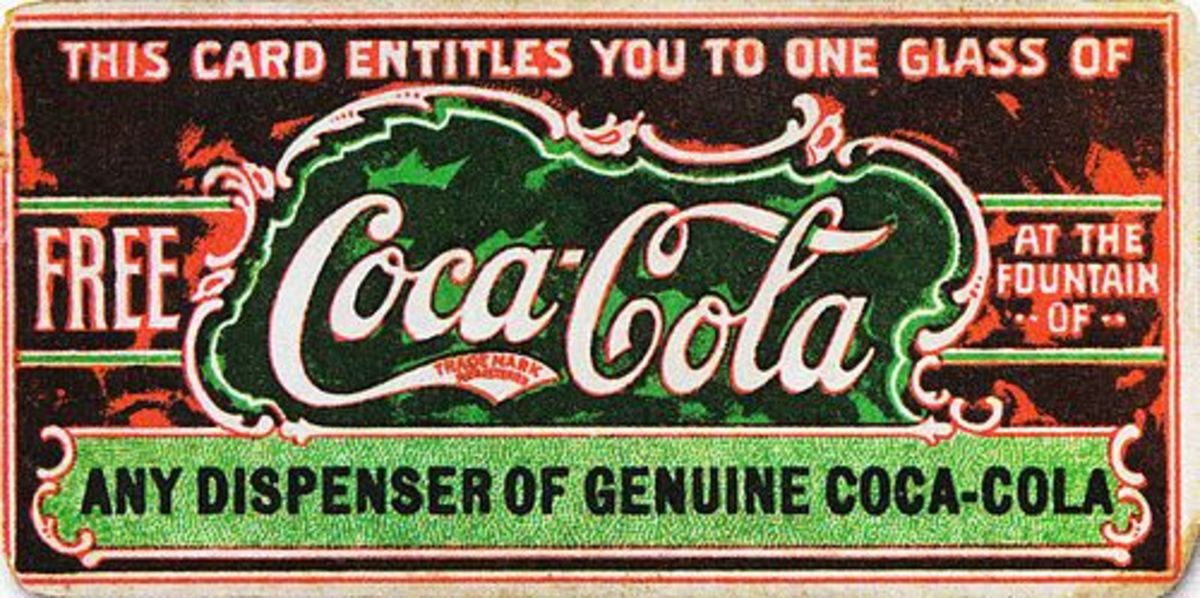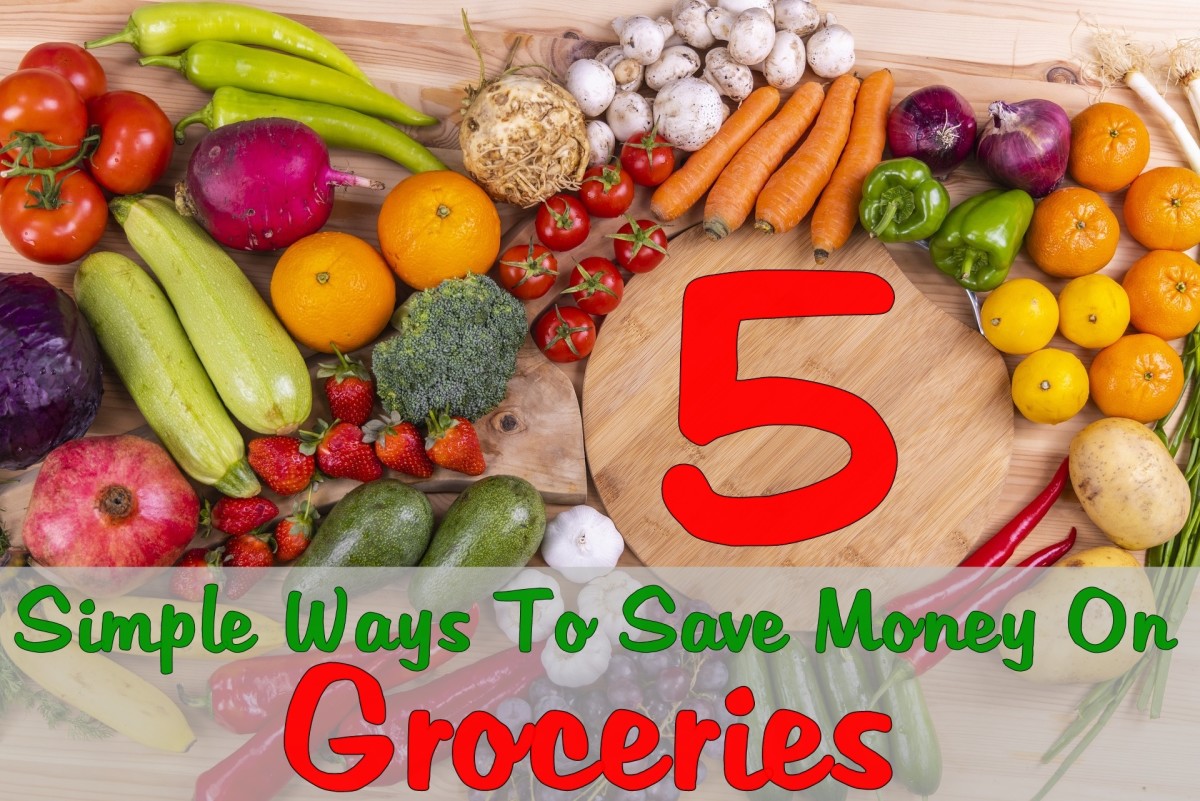How to Save $500 A Month On Food Costs (Updated)
How to Save on Groceries



Food Costs
More About Generic Brands
- 10 products to always buy generic - DailyFinance
The main reason for buying generic products -- saving money -- is simple enough. But there's also the satisfaction of not giving in to the marketing hype - Generic brand - Wikipedia, the free encyclopedia
===================
How I Saved $500 a Month on Food and Groceries - Updated
===================
I originally published this Hub about eight months ago. After reviewing what I said then, I see no reason to make any significant changes. The four largest sources of savings are still:
1. Prepare Lower Cost Meals ($150 per month)
2. Stop Buying Fast Food ($100 per month)
3. Compare Grocery Chain Prices and Select the Lowest Cost One ($100 per month)
4. Buy Groceries When the are on Sale ($50 per month)
Your savings may vary significantly from these depending upon your current shopping practices.
===================
Our family of three currently lives on a fixed income from two sources – Social Security and a modest pension. With increasing, medical, fuel and food costs, it soon became apparent that our monthly expenses were more than my monthly income.
------------------------------
After cutting back on our fixed monthly expenses as much as possible we were still about $500 short each month and the only place left to save that much money was on food and groceries.
------------------------------
Tabulating our monthly expenses for 2010 showed that we averaged more than $1200 per month for food, household items, and fast food. This seemed excessive, so I set about cutting back in as many ways as I could think of,
-----------------------------
By June through September we were averaging slightly more than $700 per month, a savings of $500 per month. What follows are the main reasons that I was able to make these savings and the estimated monthly contribution of each source:
==================
1. Buy generic brands whenever possible. ($20 per Month)
You would think that this would be a lot higher, but I learned the hard way that many generic brands are vastly inferior. I avoid them on paper products, soaps and cleaning products, soft drinks and most foods. That leaves sugar, flour, cooking oil, rice, beans etc. that seem to be roughly equivalent.
------------------------------
2. Make a shopping list and stick to it. ($20 per Month)
Impulse buying generally results in purchases that you don’t really need. When you are on a strict budget, every penny counts, so I always shop for food with a grocery list with items laid out according to the floor plan of the store. That way, I don’t double back for items that I missed. I do make adjustments to my list based on which items are on sale but I try never to go grocery shopping when I am hungry.
------------------------------
3- Buy fruits and vegetables in season or buy them frozen. ($20 per Month)
My daughter loves eating fresh fruits and vegetables. The only problem is that she has a taste for fresh blackberries and blueberries in the winter when they are expensive and of rather poor quality. Unfortunately, when they are cheaper in season, her interests switch to exotic fruits from Asia. Gradually, I am training her to eat foods in season, which I learned as a boy.
------------------------------
We lived on an acre of land and ¼ of it was planted with many different vegetables. We ate them as they ripened at different times during the summer and fall and my mother canned what she could for the winter. Learn what time of the year different fruits and vegetables go on sale, and adjust your menu accordingly. Remember that some frozen vegetables (corn, peas, beans and mixed vegetables) taste as good as fresh and are usually much cheaper.
-------------------------------
4. Collect coupons from newspapers, mailers and the Internet ($20 per month).
This source of savings is highly overrated. If you watch certain TV shows, you are led to believe that you can eat for practically nothing if you clip coupons. I literally review hundreds of coupons each month and less than one percent are for items that I normally use. On a good month, I can save about $20 even if I try to use them where they double them.
-------------------------------
5. Buy in larger quantities for items that you use regularly. ($20 per Month)
Paper towels, toilet paper, facial tissues, laundry detergent etc. are all cheaper when you buy in larger sizes. This is also true of hamburger, chicken breasts and legs, pork chops etc. Break them down into packages for one meal and freeze them.
-------------------------------
6. Buy foods when they go on sale. ($50 per Month)
Most super markets send out mailers each week that feature all of their sale items. Many of them are significant savings over regular prices. Each week, I review these mailers in detail when they first come out and plan my menus around those sale items. Sale items from a regular supermarket can often compare with or even beat prices from warehouse stores like Costco and Sam’s Club.
-------------------------------
7. Do comparison shopping between several different grocery chains. ($100 per month)
When an employee owned chain of supermarkets opened nearby, I began comparing their prices on the same items that I regularly bought at two other supermarket chains. I created a matrix on an excel spreadsheet with columns for individual grocery items, quantity purchased and costs at three different chains. Somewhat to my surprise, one chain was substantially lower on almost everything, so now I usually shop there. Be aware, however, when things go on sale at one of the other chains, they can sometimes even be lower still.
-------------------------------
8. Eliminate buying fast foods whenever possible. ($100 per Month)
The markup on fast foods is often three hundred percent. You can make equivalent foods at home for much less. My wife liked to have a sausage MacMuffin and hashbrowns about ten times a month at a cost of about $3.50 a day. A home cooked substitute breakfast cost about a $1.00, saving about $25.00 per month. My daughter got in the habit of ordering Chinese takeout or other fast food at nearly $10.00 each time. Restricting this to no more than once per week saved the other $75.00 per month. You might save more or less depending upon your eating habits.
--------------------------------
9. Prepare lower cost meals by estimating the costs of meals when planning them and actively seeking recipes for low cost meals. ($150 per Month)
Each week, when I write out my shopping list, I plan several low cost main meals that I can get two meals out of. I also adjust my menus to which foods are on sale that week. Doing this, I easily save an average of $5.00 a day or $150 per month.
---------------------------------
10. To help you get started planning low cost meals, I have provided links to some of my recipes which will feed a family of four for less than $10.00 total cost.
----------------------------------
- Baked Beans and Pork Chops
- Baked Chicken Legs and Chicken Breasts
- Baked Meatloaf
- Cabbage with Noodles
- Chicken Cutlets, Glazed Carrots and Fettuccini
- Chicken Paprikash
- Chili Soup with Shell Noodles
- Macaroni and Cheese
- Potato Dumplings with Bacon and Onions
- Tuna Noodle Casserole
==============================================
More "how to" hubs by rjsadowski
- My Mother's Cooking - How to Make an Omelet
My mother spent some time as a short order cook when she was young where she learned to make omelets among other things. The secret is to use the right pan, the right technique and the correct temperature. Omelets can be plain or they can be filled w - How to Lose 20 Pounds in 20 Weeks and Keep It off
It is time to think about how to take off those extra pounds that you put on over the winter. Crash diets don't work because you will soon get tired of starving yourself. What you need is a diet that gradually modifies your eating habits while allowi - Wine and Food - How to Hold a Wine Tasting?
One of the best ways to learn about wine is to hold a wine tasting with your friends. This Hub explains the best way to do this. Better yet, form a wine tasting club and meet regularly to learn and have fun. You can also explore different cheeses and - The Elimination Weight Loss Diet - How to Lose Weigh...
Chapter 1 of The Elimination Weight Loss Diet explains why most diets fail to help you to lose weight and to keep it off. Most diets require you to eat food that you don't like, to count calories, to weigh portions or to buy special meals. As soon as - How Often Should You Check Your Blood Sugar with Typ...
People with Type II Diabetes often wonder when is the best time to check their blood sugar level and how often should they check it. That will depend on whether or not they are taking insulin along with their other medications. This article explains









